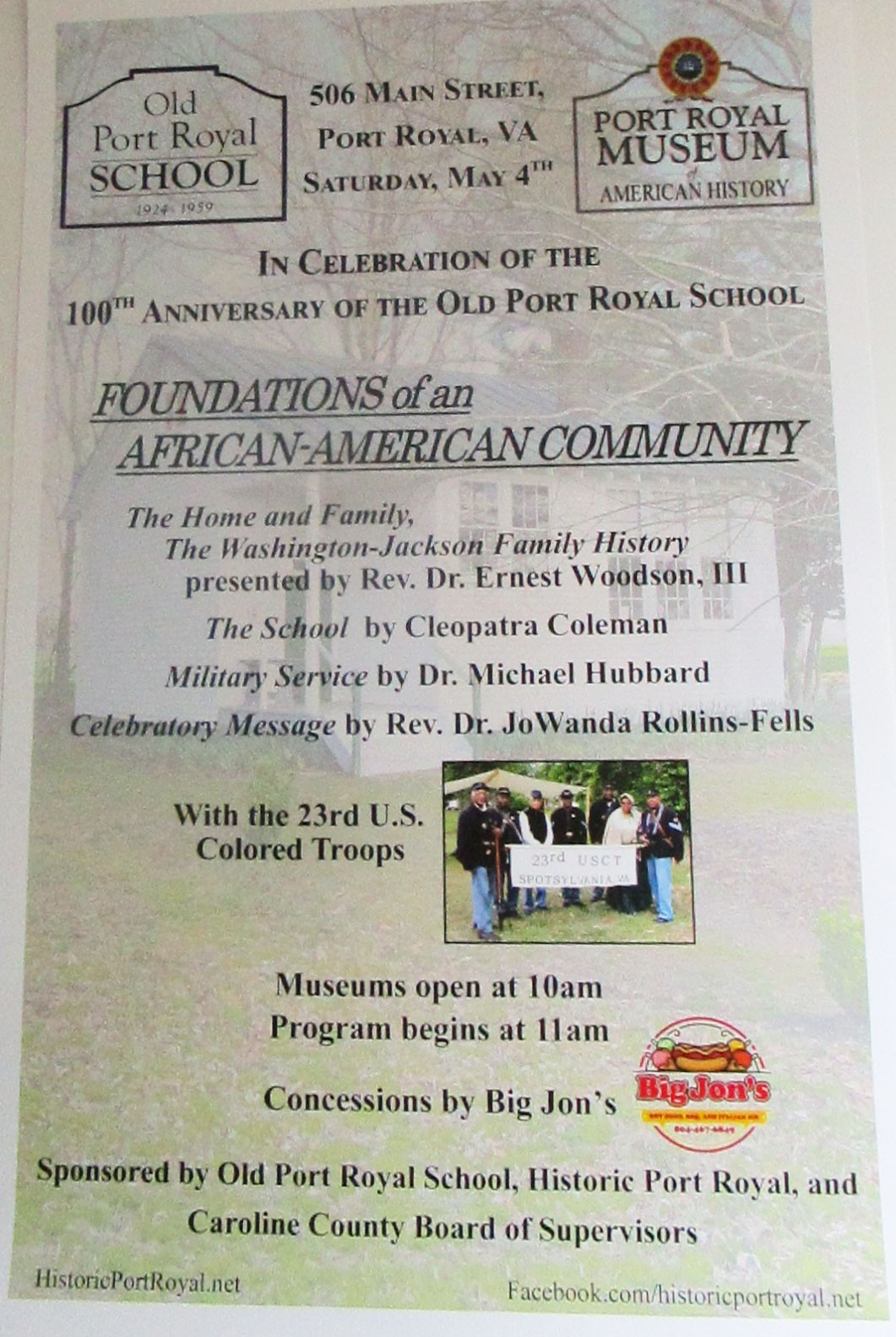Click here to view in a new window.
Sacred Ground
Sacred Ground meeting, May 30, 2024
7 on Zoom call
The meeting opened with prayer.
Catherine talked about how grateful she has been that we’ve had the opportunity to work together to address the issues around racism in our own lives, in our church, and in our nation. We’ve worked hard and not only learned a lot, but also done some specific things to address racial injustice.
Discussion
- Scholarship
Email from Germanna – Jessica Thompson – copied below. Funds delivered for 3 students to obtain a commercial drivers certificate. They completed the training and are in the workforce
Dear Andrea and the Sacred Ground Committee,
We are truly grateful for your generous donation of $2,700 to support three students at Germanna in obtaining their Commercial Driver’s License Class A Truck Driver training credentials. We are pleased to report that each student successfully completed the training and is now entering the workforce in our area. One student wrote, “I would like to thank them for supporting people like me who are working full-time while trying to get a better education and build a future for myself and my family. “
As a reminder, these are the three students that your contributions helped:
Devonte B.
Sacred Ground meeting, Feb. 29, 2024

The meeting started with a Collect on the right use of God’s gifts
Meeting with Chief Anne Richardson of the Rappahannock Indians
In 1998, the Rappahannock Indians elected the first woman Chief, G. Anne Richardson, to lead a Tribe in Virginia since the 1700s as a fourth generation chief in her family. Also in 1998, the Tribe purchased 119.5 acres to establish a land trust, retreat center, and housing development.
Catherine met with her on Feb. 29, 2024. She found her amazingly wise, charismatic but humble. Issues discussed:
Sacred Ground, Jan 18, 2024

The meeting was Thurs, Jan 18, 7pm on Zoom
I Scholarship funds
Check for $2,700 was provided in January for the workforce scholarship program at Germanna Community. The three are receicing instruction in the following fields – excavator operator, owner/operator trucking, and CDL training.
We will invite our contact Jessica Thompson, Executive Director of the Germanna Educational Foundation to an event at St. Peter’s in the future
II. Future projects
- Investigate Black owned bank or Black owned businesses. Options include work with local black organizations such as the Caroline County branch of NAACP – https://naacpcaroline.org/ and/or the Virginia Black Chamber of Commerce (VABCC). https://www.vablackchamberofcommerce.org/. The latter’s mission is “ensure the economic prosperity and sustainability of Virginia’s vibrant small business community. They offer a directory of Black businesses .
- Feb 10 presentation on Port Royal at the Old Port Royal School. a Black School. It was constructed and used from 1924 to 1959. This is the 100th anniversary
- Bingo- Last Monday – Feb 26, 6pm Caroline county Public Schools. This may be a good opportunity for discussion with local leaders
- Meeting with school administrations about opportunities for St. Peters and other churches
III. Book discussion – How We Can Win Race, History and Changing the Money Game Thats Rigged by Kimberly Jones
The book was a breakdown of the economic and social injustices that have plagued Black People. Jones is an author, film maker and book seller. The language was somewhat shocking but it was a technique for bringing us into her world, particularly the gang infested atmosphere in Chicago during the 1980;’s
She discussed the economic effects of slavery. Blacks missed out on the amazing of wealth through home ownership, education and community investment . She equated it to about four hundred rounds of Monopoly lost. Whites are 60% of the population but control 60% of the wea;th.
Her solutions include a program called Reconstruction 2.0 which include the payment of reparations, use of a Truth and Reconciliation process ,reinstitution of the Freedmen’s Bureau , defunding the police, reinvigorating neighborhoods
Next meeting Feb 29, Zoom 7pm
2023 Highlights at St. Peter’s
This is a topical summary. We have another page that is a chronological listing of 2023 events with table of contents with links to the events.
The highlights can be grouped as follows:
A. New ministry
God’s Garden
Chancellors Village
Advent Worskhop
B. New expressions in ministry
Stewardship tree
Lent -Stations of the Cross in the graveyard and more services
C. Expanded and revised ministries
Mission trip to Jamaica
Anniversary Village Harvest Food Ministry
Sacred Ground revised
ECM (Episcopal Church Men) end of year expanded donations and use of an art auction.
Community – Prayer service, Outside Christmas pageant, Work with community organizations
Key parishioner volunteering
ECW (Episcopal Church Women) projects
D. Music provided new delights
Easter, the summer and Christmas
Blue grass concert
E. Losses connected with two historic trees and two heating systems.
1. New ministry – God’s Garden
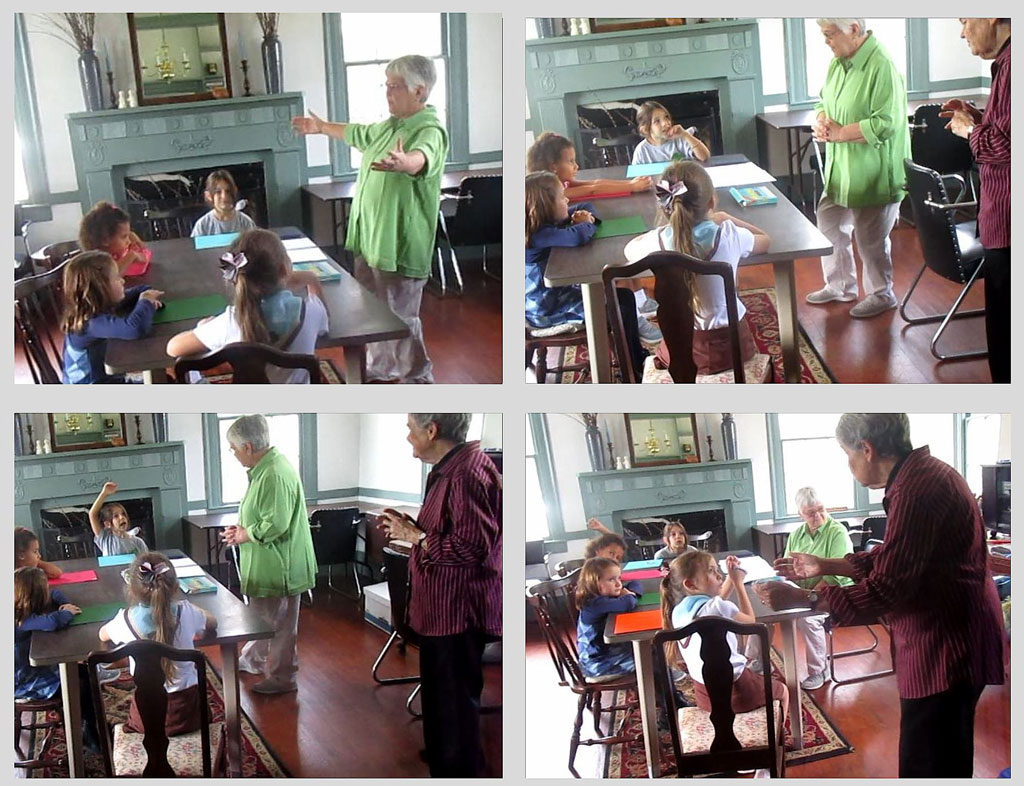
A new ministry debuted Sept 17, 2023. God’s Garden for 5 to 9 year olds began with 4 children and two experienced teachers, Elizabeth Heimbach, the originator of the class and Jan Saylor.
One of the first activities was to “God’s Garden” which explored what it meant to be a saint, today (Oct. 1, 2023) for St. Francis Day on Oct. 4. As an example they told the story of St. Francis taming the Wolf of Gubbio. Then, they made Pet blessings with treats to give out in church to make pets happy on St. Francis Day, Oct. 4.
2. Expanded ministry in Jamaica

Even before the mission began, we hosted Annette Steele, principal of Victoria Primary School who enjoyed a full day at St. Peter’s on Sun, Aug. 13. She addressed the church at announcements about our joint mission to help the students in her elementary school get ready for school in Sept, both in 2021 and 2023. She explained how much it meant to the students and her community.
After the service, she enjoyed St. Peter’s hospitality at a luncheon and met our parishioners and guests.
The group of 3 on the mission team distributed our donations in Jamaica on Aug. 26
We not only brought the usual school supplies but added 6 tablets. Separately, 7 used computers were donated to a school that had never had a computer.
There were different ways of distributing the items. There were contests for tablets and food baskets won by answering questions. Certificates given out based on merit overall and in areas like math. A number of students won $1,000 Jamaican dollars for math competency. Teachers were not forgotten – 2 footballs were given out to the coach!
3. Village Harvest ended its 9th year and began its 10th year in August, 2023 and ended the year serving the most people since 2019.
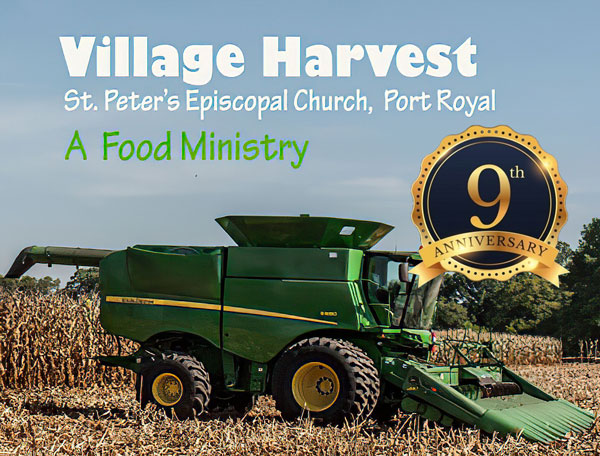
For the year, we recovered from a slow 1st quarter, 2023 and ended the year serving 1,063 people compared to 1,051 in 2022. It was the best yearly total since 2019.
Unfortunately, the same trend overall wasn’t present with food. Food increased from 2021 to 2022 (14,303 to 15,302 pounds) but dipped to 13,859 pounds in 2023. The first quarter was the problem. We had 2,913 pounds in that quarter compared over 4,000 for 2022 and 2021.
As a result, pounds provided per individual dropped from 14.56 in 2022 to 13.04. In 2021, it was in the same range at 14.32. Overall, pounds per individual are substantially higher since 2019 than in earlier periods.
The 2023 collection on Giving Tuesday, Nov 28 of $1,205 was the highest Giving Tuesday figure since 2019 and provides over 5 months of support for purchasing food for 2024
4. Sacred Ground revised their scholarship program
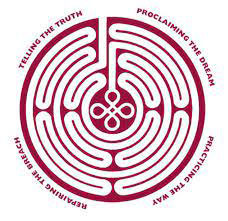
Representatives from Sacred Ground met with Jessica Thompson, Executive Director of the Germanna Educational Foundation, for lunch at Castiglias in Fredericksburg on Oct. 10, 2023. The goal was to determine how we could move forward with a new focus on our scholarships for students.
Sacred Ground voted unanimously by email in early December to fund the recommendation forwarded by Jessica Thompson at Germanna for scholarships for students entering the trades. Each student is “in financial need and from underserved populations.” The $2,700 would be split equally to pay for their training.
Each student owes approximately $1,500 for the classes to complete the training. We will pay for the additional expense for each student through additional scholarship funds
They also toured Patawomeck Village in November. The goal of the visit was to understand their history and culture as well as our role
Earlier, the Sacred Ground group had the pleasure of meeting with Alanna Gray (beside Catherine), and her mother and grandmother (opposite Alanna) at Cuppa Cheer in February
Rejoice this Advent! Sacred Group votes for scholarship funds for 2024

Sacred Ground voted unanimously by email in early December to fund the recommendation forwarded by Jessica Thompson at Germanna for scholarships for students entering the trades. Each student is “in financial need and from underserved populations.” The $2,700 would be split equally to pay for their training.
Each student owes approximately $1,500 for the classes to complete the training. We will pay for the additional expense for each student through additional scholarship funds. We will have a scholarship reception in the spring where we can have the committee attend and meet students that benefit.
Photos, Patawomeck Village tour, Nov. 8, 2023, Sacred Ground
Tour notes are here
St. Peter’s Sacred Ground group had a wonderful fall tour of the Patawomeck Indian settlement just east of Fredericksburg on Route 17 on Nov. 8, 2023. The goal of the visit was to understand their history and culture as well as our role as well. They are one of 11 tribes recognized by Virginia.
There is the 1915 home originally owned by Duff Green that has two rooms of history plus an outside village that opened just this year in July. It is a “work in progress”. The tribe did most of the work to repair the house and create the village.
The tribe originally settled in North Stafford but moved south when Quantico took some of the land. The Indians played a major role in helping the Jamestown colony survive during the winter of 1609-1610 (“the starving time”). Unfortunately, the English did not return the favor but pushed them out. A group settled near us in Port Royal from 1750 to 1820 when they then moved to the Little Falls area of Stafford County and coalesced. There are 2,500 in the tribe today. Thanks to Brad Hatch, a member of tribe and Tribal Council for his tour. An excellent tour and definitely a site worth visiting!
Newsletter, November, 2023
Click here to view in a new window.
What Does Ministry Look Like ?
This is a PowerPoint comprising a list and description of St. Peter’s ministries under four headings – internal, local partners, state and national partners and international partners. The internal are distinguished by parishioner involvement and are generally active yearly. The others may not be active every year.
Many of these ministries represent the day to day work of the church, both outreach into the world and inreach for those within the church. The church is more than just Sunday and the St. Peter’s building but is working in the world! They involve the both the clergy and parishioners in the church as well as others. Many of these ministries are historic (Bible Study is 20 years old) but some, like Sacred Ground were created in the last five years.
To see a full screen version, press right button in the bottom windows  to open in a new window
to open in a new window
Your giving for 2024 is crucial to making these ministries thrive. Also, consider joining these ministries and contribute toward their successes. We are always on the lookout for new ministries. An example is Andrea Pogue’s work with Shred-it which originated with her.
Sacred Ground Group meets with Germanna on workforce scholarships
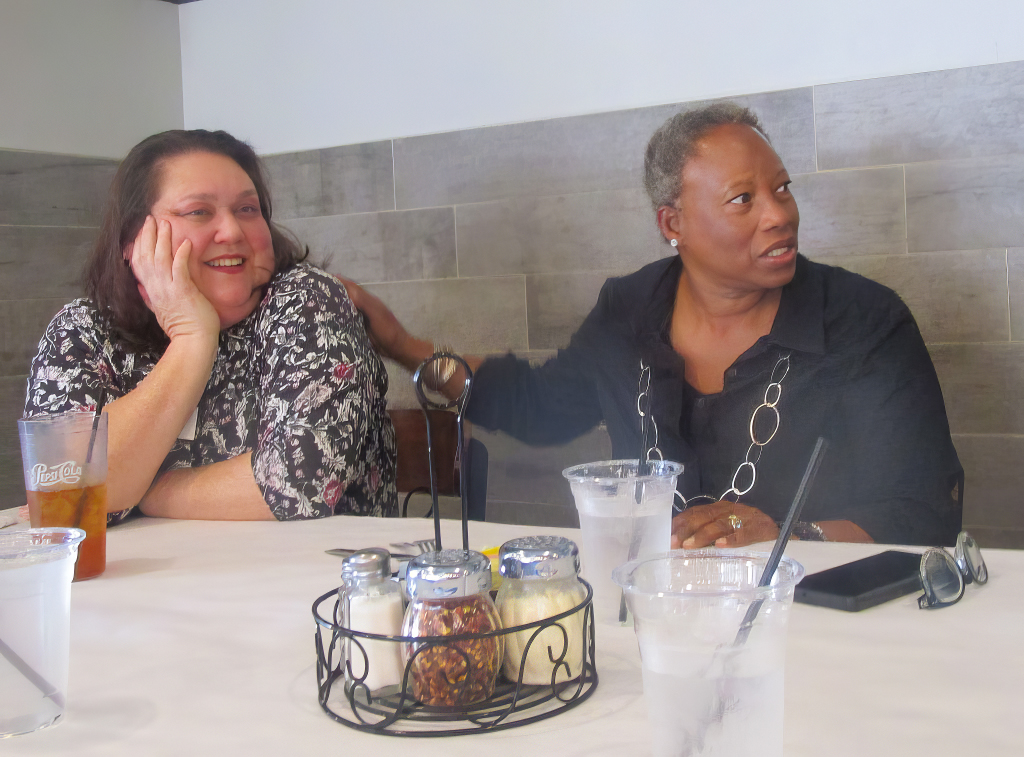
Representatives from Sacred Ground met with Jessica Thompson, Executive Director of the Germanna Educational Foundation, for lunch at Castiglias in Fredericksburg on Oct. 10, 2023. The goal was to determine how we could move forward with a new focus on our scholarships for students.
Indigenous Peoples Day, Oct. 9, 2023
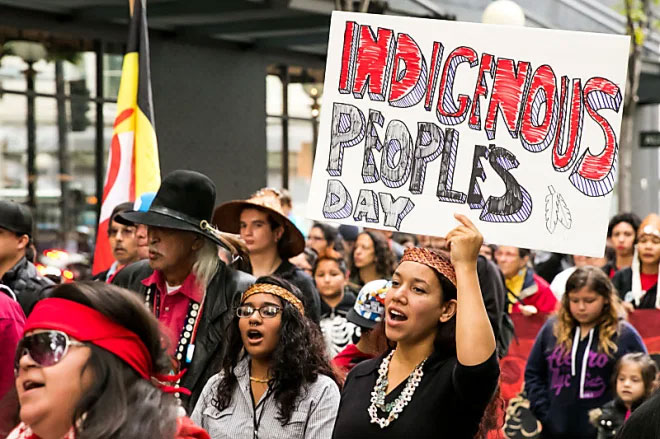
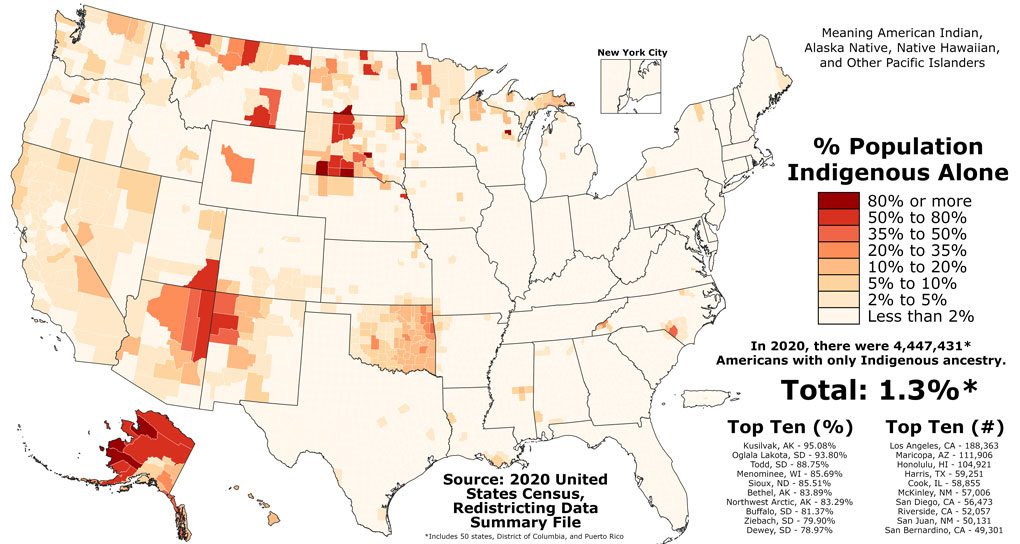
In recognition of Indigenous Peoples’ Day (Oct 9, 2023), today’s liturgy (Oct 8, 2023) contains Native American resources.
Here are 4 parts of the service with themes and two videos (Communion Hymn, Prayers of the People, Blessing and Song of Praise):
Meyer Gallery trip for Sacred Ground
Sacred Ground will be going to the Meyer gallery in Fredericksburg on Tues Oct. 10, 10am to see the art works on display. Here is a video interview with Meyer.
The interest in Sacred Ground is Meyer’s resarch in connection with mid-19th century Afro-American artist Robert Duncanson, one of the leading landscape painters. The Free Lance-Star published a recent article on Mayer and Duncanson. Free Lance-Star article
Meyer believes “Duncanson’s works can be viewed as instruction manuals for enslaved Blacks attempting to escape north.” It might be a path and features to mark the path or obstacles to avoid. Meyer will have 40 of Duncanson’s paintings representing “the path to freedom” at his gallery at 1015 Caroline St. through Oct. 28.
Here is a Powerpoint of Duncanson’s life as well as 16 of his paintings as a warmup for the tour:
To see a full screen version, press right button  to open in a new window or Click here
to open in a new window or Click here
More about the Sacred Ground Group
The Sacred Ground group was formed in 2020 to watch and discuss Sacred Ground: A Film Based Dialogue Series on Race and Faith in 2020. The 10 week study session was created by the Episcopal Church to explore the roots of racial conflict in the United States through the effects of race and racism throughout American history.
After completing the series, the group has continued reading various books to learn more about the impact of racism in the United States. The group is currently reading How we can win: Race, History and Changing the Money Game that’s Rigged, by Kimberly Jones.
The group has also set up a Sacred Ground Scholarship, a fund available to Black and Native American students, as a way to combat the historical inequities in education caused by racism.

The group also hopes to visit the Patawomeck Museum and Cultural Center in Stafford, which has recently opened. This visit may take place in November.
Consider joining the St Peter’s Sacred Ground Group. All are welcome!
Newsletter, October, 2023
Click here to view in a new window.
Sacred Ground resumes…

Please consider joining Sacred Ground, the group at St Peter’s working specifically for racial reconciliation in our lives, in our community, in our nation and in the world. All are welcome. We are meeting on Zoom on Sept. 12.
Members of the group are coordinating with Germanna Community College Workforce to seek a recipient for the St Peter’s Sacred Ground Scholarship as we move forward.
We are seeking information from the Diocese about the history of St Peter’s, so that we can understand our history more fully as we learn about how our past is intertwined with the institution of slavery.
We hope to deepen understanding of the history and culture of the Native Americans of the Rappahannock and Patawomeck Tribes by planning a field trip to the Patawomeck Museum and Cultural Center in Stafford and working to establish a connection with the Rappahannock Tribe.
The group will also choose a book to read and to discuss as we to continue increase the knowledge that will help us to improve our work for racial reconciliation.
Join the meeting on Zoom, 7PM on Tuesday, September 12. https://us02web.zoom.us/j/85488115724?pwd=K0tJTTV1VTA4Z3RLUWhUZlUwdlkzdz09 Meeting ID: 854 8811 5724 Passcode: 539098
Newsletter, September, 2023
Click here to view in a new window.
Remembering Martin Luther King on his birthday, Jan 15

It was 55 years ago. Just after 6 p.m. on April 4, 1968, Martin Luther King Jr. is fatally shot while standing on the balcony outside his second-story room at the Lorraine Motel in Memphis, Tennessee. The civil rights leader was in Memphis to support a sanitation workers’ strike and was on his way to dinner when a bullet struck him in the jaw and severed his spinal cord. King was pronounced dead after his arrival at a Memphis hospital. He was 39 years old.
In the months before his assassination, Martin Luther King became increasingly concerned with the problem of economic inequality in America. He organized a Poor People’s Campaign to focus on the issue, including an interracial poor people’s march on Washington, and in March 1968 traveled to Memphis in support of poorly treated African-American sanitation workers. On March 28, a workers’ protest march led by King ended in violence and the death of an African-American teenager. King left the city but vowed to return in early April to lead another demonstration.
On April 3, back in Memphis, King gave his last sermon, saying, “We’ve got some difficult days ahead. But it really doesn’t matter with me now, because I’ve been to the mountaintop…And He’s allowed me to go up to the mountain. And I’ve looked over, and I’ve seen the Promised Land. I may not get there with you. But I want you to know tonight that we, as a people, will get to the promised land.”
King was no stranger to controversy. Though he had little experience in activism, King with a doctorate in theology was known for his speaches. In 1955, community leaders recruited him to be the spokesperson for the Montgomery bus boycott, one of the first major protests of the civil rights era. The boycott lasted for more than a year and resulted in the U.S. Supreme Court declaring racial segregation on public buses unconstitutional.
King’s role in that boycott transformed him into a national figure. In 1957, he co-founded the Southern Christian Leadership Conference to help encourage other communities to take up the crusade for civil rights.
5 years before his asssassination, he was focusing on desegregation before the landmark 1964 Civil Rights act. He was in Birmingham on a campaign of coordinated marches and sit-ins against racism and racial segregation in Birmingham, Alabama.
At the time, in parts of the country—especially in the South—blacks couldn’t eat at certain restaurants, continued to attend segregated schools (though the practice had been outlawed years earlier), and were unemployed at a rate nearly twice that of whites.
The non-violent campaign was coordinated by Alabama Christian Movement for Human Rights and King’s Southern Christian Leadership Conference. On April 10, a blanket injunction was issued against “parading, demonstrating, boycotting, trespassing and picketing”. Leaders of the campaign announced they would disobey the ruling. On Good Friday, April 12, King was roughly arrested with others.
King was not always popular with clergy due to his tactics. The day of his arrest, eight Birmingham clergy members wrote a criticism of the campaign that was published in the Birmingham News, calling its direct action strategy “unwise and untimely.”
LINKS
1 King wrote “Letter from a Birmingham Jail in response. King’s Letter has been called one of the most significant works of the Civil Right movement. The Letter
3 Forum in Feb., 1964 on the letter
4 King and the Book of Amos as reflected in the letter. King used the book of Amos throughout his career.
5 King’s Philosophy of Non-Violence
What is Juneteenth and Why Do We Celebrate on June 19?
Because the Southern Confederacy viewed themselves as an independent nation, the Emancipation Proclamation did not immediately free all of the enslaved population because the Rebel governments would not enforce Lincoln’s proclamation. Texas became a stronghold of Confederate influence in the latter years of the Civil War as the slaveholding population ‘refugeed’ their slave property by migrating to Texas.
Consequently, more than 50,000 enslaved individuals were relocated to Texas, effectively prolonging slavery in a region far from the Civil War’s bloodshed, and out of the reach of freedom—the United States Army. Only after the Union army forced the surrender of Confederate General Edmund Kirby Smith at Galveston on June 2, 1865, would the emancipation of slaves in Texas be addressed and freedom granted. On June 19, 250,000 enslaved people were freed.
The issuing of General Order No. 3 on June 19, 1865, marked an official date of emancipation for the enslaved population. Nonetheless, those affected faced numerous barriers to their freedoms. General Order No. 3 stipulated that former slaves remain at their present homes, were barred from joining the military, and would not be supported in ‘idleness.’ Essentially, the formerly enslaved were granted nothing beyond the title of emancipation. The official end of slavery in the United States came with the ratification of the 13th Amendment in 1865.
After becoming emancipated, many former slaves left Texas in great numbers. Most members of this exodus had the goal of reuniting with lost family members and paving a path to success in postbellum America. This widespread migration of former slaves after June 19 became known as ‘the Scatter.’
Because the Southern Confederacy viewed themselves as an independent nation, the Emancipation Proclamation did not immediately free all of the enslaved population because the Rebel governments would not enforce Lincoln’s proclamation. Texas became a stronghold of Confederate influence in the latter years of the Civil War as the slaveholding population ‘refugeed’ their slave property by migrating to Texas. Consequently, more than 50,000 enslaved individuals were relocated to Texas, effectively prolonging slavery in a region far from the Civil War’s bloodshed, and out of the reach of freedom—the United States Army. Only after the Union army forced the surrender of Confederate General Edmund Kirby Smith at Galveston on June 2, 1865, would the emancipation of slaves in Texas be addressed and freedom granted. On June 19, 250,000 enslaved people were freed.
The issuing of General Order No. 3 on June 19, 1865, marked an official date of emancipation for the enslaved population. Nonetheless, those affected faced numerous barriers to their freedoms. General Order No. 3 stipulated that former slaves remain at their present homes, were barred from joining the military, and would not be supported in ‘idleness.’ Essentially, the formerly enslaved were granted nothing beyond the title of emancipation. The official end of slavery in the United States came with the ratification of the 13th Amendment in 1865.
After becoming emancipated, many former slaves left Texas in great numbers. Most members of this exodus had the goal of reuniting with lost family members and paving a path to success in postbellum America. This widespread migration of former slaves after June 19 became known as ‘the Scatter.’

